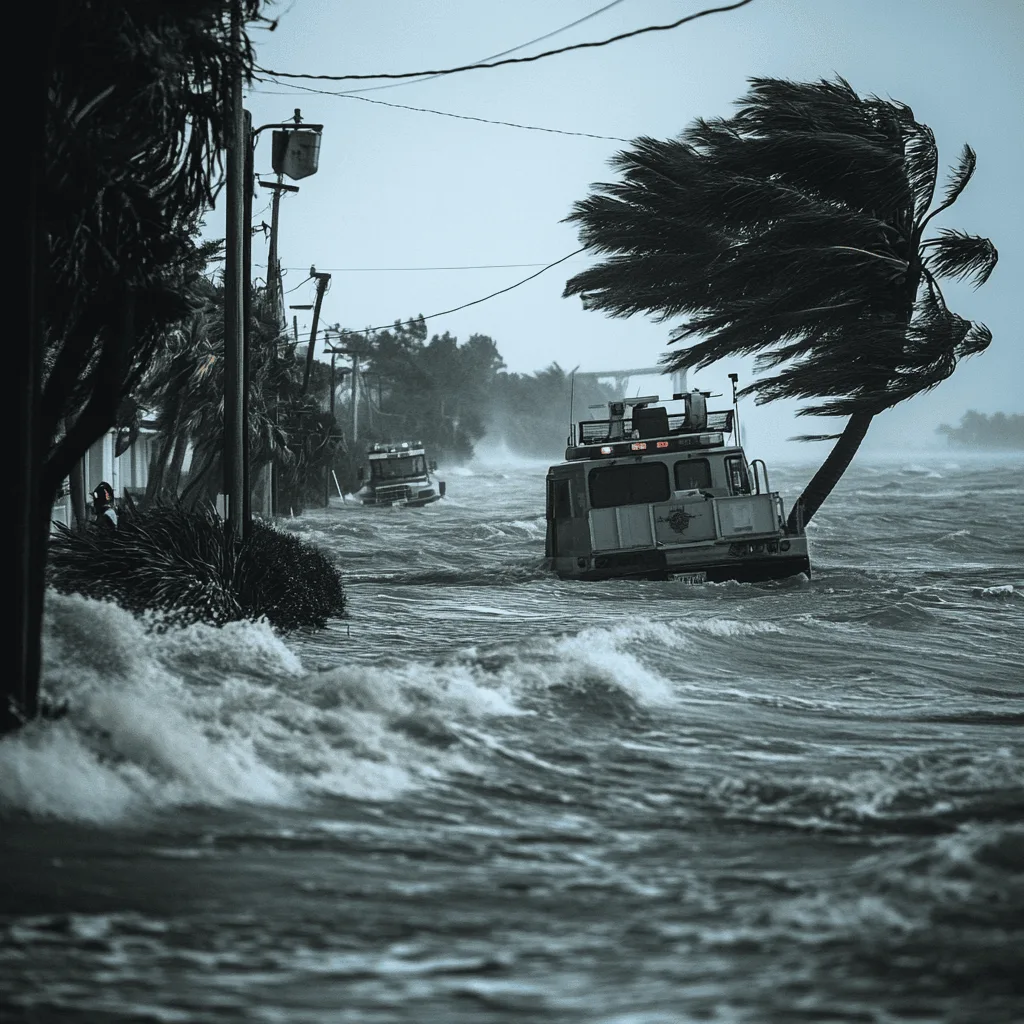
When disaster strikes, communication becomes a lifeline. Every second counts, and the ability to deliver accurate, timely information can be the difference between life and death. For local government agencies, first responders, and emergency managers, a robust disaster communication plan is no longer a luxury — it’s a necessity. This guide offers a comprehensive overview for developing a communication system that empowers you to effectively inform and protect your community in times of crisis.
What is Disaster Management?
Disaster management is a systematic process that encompasses a range of activities aimed at mitigating the adverse impacts of disasters on communities and infrastructure.
It involves a continuous cycle of planning, organizing, implementing, and evaluating measures to effectively prepare for, respond to, and recover from disruptive events, whether natural or human caused.
The core objectives of disaster management include minimizing loss of life and property, ensuring public safety, facilitating timely and efficient response and recovery operations, and fostering community resilience in the face of adversity.
This necessitates a collaborative approach involving government agencies, emergency responders, community organizations, and the general public working together to build preparedness, enhance response capabilities, and promote efficient and timely recovery.
Understanding the Importance of Emergency Communication
Emergency communication is the vital link that connects individuals, communities, and response agencies during times of crisis. Its importance cannot be overstated, as it plays a crucial role in safeguarding lives, minimizing damage, and facilitating a swift and effective response to disruptive events.
Here’s why emergency communication is so critical:
- Enhancing situational awareness: Effective communication channels provide real-time information about the nature and scope of emergencies, enabling individuals and communities to make informed decisions and take appropriate actions to protect themselves.
- Facilitating coordinated response: Clear and timely communication between emergency responders, government agencies, and the public ensures a coordinated and efficient emergency response, optimizing resource allocation and minimizing duplication of effort.
- Improving public safety: By disseminating critical information about evacuation routes, shelter locations, and safety procedures, emergency communication empowers individuals to take proactive steps to safeguard themselves and their loved ones.
- Reducing misinformation and panic: Accurate and timely communication helps to counter rumors and misinformation that can spread rapidly during emergencies, reducing fear and preventing unnecessary risks.
- Expediting recovery and restoration: Effective communication channels facilitate the flow of information about support services, available resources, and recovery efforts, enabling communities to rebuild and recover more quickly from disasters.
Emergency communication serves as the central nervous system of disaster response, enabling rapid information sharing, coordinated action, and ultimately, a more resilient and prepared community.
Disaster Communication Plan Key Objectives and Examples
The purpose of a disaster communication plan is to provide a strategic framework for disseminating information before, during, and after an emergency. It ensures that all stakeholders – from first responders and government officials to the public – receive accurate, timely, and actionable information to facilitate a coordinated and effective response.
For local governments and emergency response agencies, a robust communication plan is not merely a matter of public relations; it’s a critical component of operational efficiency and public safety.
Key objectives:
- Enhanced situational awareness: Provide a common operating picture for all responders, enabling informed decision-making and resource allocation based on real-time information.
- Streamlined coordination: Facilitate seamless communication and collaboration between agencies, minimizing duplication of effort and maximizing response efficiency.
- Public safety and order: Empower the public with timely warnings, clear instructions, and access to critical resources, reducing confusion and promoting orderly evacuations or sheltering procedures.
- Community resilience: Build trust and confidence through transparent communication, fostering a sense of shared responsibility and preparedness within the community.
Examples of disaster communication plans include:
- Integrated Public Alert and Warning Systems (IPAWS): Utilizing multiple channels (EAS, Wireless Emergency Alerts, social media) to disseminate geographically targeted warnings and instructions to the public.
- Emergency Operations Center (EOC) Communication Protocols: Establishing clear procedures for information flow, decision-making, and interagency coordination within the EOC.
- Incident Command System (ICS) Communication Plans: Integrating communication strategies into ICS protocols to ensure clear lines of communication within and between response teams.
- Public Information Officer (PIO) Training and Guidelines: Equipping PIOs with the skills and resources to effectively manage media relations, disseminate public information, and counter misinformation.
- Community Outreach and Education Programs: Developing proactive communication strategies to educate the public about disaster preparedness, risk mitigation, and available resources.
8 Steps of a Critical Disaster Communication Plan
1. Comprehensive Disaster Preparedness
- All-Hazards Approach: Adopt an all-hazards approach to identify the full spectrum of potential threats, including natural disasters, technological accidents, public health emergencies, and acts of terrorism.
- Historical Analysis and Future Projections: Analyze historical incident data and leverage predictive modeling to anticipate future risks, taking into account factors like climate change and urbanization.
- Critical Infrastructure Assessment: Conduct a thorough assessment of critical infrastructure vulnerabilities (power grids, transportation networks, healthcare facilities) to identify potential cascading effects and prioritize communication strategies.
2. Strategic Crisis Communication Team Formation
- Multi-disciplinary expertise: Assemble a diverse team of communication professionals with expertise in public information, media relations, crisis communication, and risk communication. Include representatives from various agencies and departments.
- Designated Public Information Officers (PIOs): Select and train PIOs from each agency to serve as official spokespeople during emergencies. Ensure they possess strong communication skills, media savvy, and the ability to convey information clearly and calmly under pressure.
- Communication roles and responsibilities: Clearly define roles and responsibilities for each team member, outlining communication protocols, approval processes, and escalation procedures.
- Joint Information System: Develop and utilize a Joint Information System (JIS) to:
- Deliver coordinated interagency messages.
- Develop, recommend, and execute public information plans and strategies.
- Advise on public affairs issues that could affect the incident management efforts.
- Address and manage rumors and inaccurate information that could undermine public confidence.
3. Integrated Emergency Operations Plan
- Unified command and control: Integrate your communication plan seamlessly into a comprehensive emergency operations plan that establishes a clear chain of command, facilitates interagency coordination, and streamlines resource allocation.
- Standardized operating procedures (SOPs): Develop SOPs for activating the communication plan, disseminating information, managing media inquiries, and coordinating with external partners.
- Joint training and exercises: Conduct regular joint training exercises involving all relevant agencies to practice communication protocols, test crisis response capabilities, and identify areas for improvement.
4. Targeted Message Development
- Audience-specific communication: Craft clear, concise, and audience-specific messages for different stakeholders (residents, businesses, media, first responders). Tailor language, tone, and content to ensure comprehension and avoid jargon.
- Prioritization of critical information: Focus on delivering need-to-know information first, prioritizing life-saving instructions, evacuation orders, and safety guidelines.
- Multi-lingual and accessible formats: Ensure messages are available in multiple languages and accessible formats (e.g., large print, audio, braille) to reach diverse and special access and needs populations.
5. Stakeholder Mapping and Engagement
- Comprehensive stakeholder identification: Identify all key stakeholders, including government officials and agencies, community organizations, businesses, media outlets, and vulnerable populations.
- Tailored communication strategies: Develop tailored communication strategies for each stakeholder group, considering their specific needs, concerns, and preferred channels of communication.
- Relationship building and collaboration: Foster strong relationships with key stakeholders before emergencies occur to facilitate trust and cooperation during critical events.
6. Real-Time Information Management
- Situational awareness and monitoring: Maintain real-time situational awareness through continuous monitoring of events, data feeds, and social media.
- Information verification and accuracy: Establish protocols for verifying information accuracy before dissemination to avoid spreading misinformation.
- Timely and consistent updates: Provide frequent and consistent updates to the public and stakeholders through various channels (website, social media, press releases) to maintain trust and manage expectations.
7. Strategic Social Media Utilization
- Platform selection and content strategy: Identify relevant social media platforms and develop a content strategy that aligns with your target audience and communication objectives.
- Proactive engagement and community building: Use social media to proactively engage with the community, build relationships, and foster a sense of preparedness.
- Misinformation monitoring and correction: Actively monitor social media for rumors and misinformation, and promptly address inaccuracies with accurate information.
8. Accessible and Inclusive Communication Systems
- Multi-channel dissemination: Utilize a variety of communication channels (website, social media, text alerts, email, radio, sirens) to reach diverse audiences and ensure redundancy.
- Accessibility considerations: Prioritize accessibility for special access and needs populations by providing information in alternative formats (e.g., large print, audio, sign language) and ensuring website compliance with accessibility standards.
- Language access and cultural sensitivity: Provide information in multiple languages and consider cultural sensitivities to ensure effective communication with all community members.
The Role of Technology for Enhanced Emergency Communication
Technology plays a pivotal role in enhancing emergency communication, enabling faster information dissemination, improved coordination, and greater public access to critical updates. Leveraging the right tools can significantly strengthen your disaster communication strategy, making your community safer and more resilient.
Here’s how technology can enhance your crisis communication plan:
1. Mass Notification Systems
Mass notification systems allow you to quickly send emergency alerts and critical information to large groups of people through various channels, including text messages, emails, phone calls, and social media. This ensures that residents receive timely warnings and instructions during emergency situations.
2. Social Media Monitoring Tools
Social media platforms are valuable sources of real-time information during disasters. Monitoring tools help you track keywords, hashtags, and mentions to stay informed about emerging situations, identify public concerns, and address rumors or misinformation promptly.
3. Crisis Mapping Platforms
Mapping platforms like Perimeter support map-based, real-time collaboration between public safety agencies and emergency managers about hazards, evacuation zones, shelter locations, evacuation routes, road closures, etc.. This information can be easily published through mass notification solutions, social media channels, and other digital media channels to support enhanced community engagement and provide the public with the most accurate information possible throughout the lifespan of every incident.
4. Geographic Information Systems (GIS)
GIS technology enables you to map critical infrastructure, analyze vulnerabilities, and model potential disaster scenarios. This information helps you prioritize communication efforts and target specific areas or populations with relevant information.
5. Data Analytics and Visualization
Analyzing data from various sources (social media, sensor networks, 911 calls) can provide valuable insights into public needs and response effectiveness. Data visualization tools help you communicate these insights clearly and make informed decisions.
Incorporating technology into your disaster response plan is no longer optional — it’s essential for ensuring the safety and well-being of your community.
Perimeter Can Help When Disaster Strikes
Perimeter is an all-hazards collaboration and communication platform specifically designed to enhance communication and coordination during emergencies.
For Emergency Managers and Responders
- Real-time situational awareness: Perimeter provides a shared, interactive map where emergency responders can contribute to and see the locations of incidents, road closures, evacuation zones, and other personnel. This real-time view helps everyone stay informed and coordinate their efforts more effectively.
- Streamlined communication: Perimeter allows for quick and easy communication between responders, EOCs (Emergency Operations Centers), and the public. It supports tools for sending alerts, sharing updates, and coordinating resources.
- Improved information management: Perimeter helps to centralize and organize critical information, making it easier to track resources, manage evacuations, and document incident details for analysis and reporting.
For the Public
- Access to reliable information: Perimeter allows officials to share verified information with the public through a dedicated website. This gives residents access to real-time updates on the situation, safety instructions, evacuation routes, and shelter locations. There is no download or login required for perimetermap.com.
- Reduced confusion and anxiety: By providing a single source of truth, Perimeter helps to counter rumors and misinformation that can circulate during disasters.
- Increased preparedness: Perimeter allows residents to familiarize themselves with potential hazards and evacuation routes in their area, improving their preparedness for future emergencies.
Specific examples of how Perimeter can help:
- During a wildfire: Perimeter can be used to share real-time updates on the fire’s location and spread, evacuation orders, and the location of shelters. Responders can use the platform to coordinate firefighting efforts and road closures.
- During a hurricane: Perimeter can help officials communicate evacuation routes and the location of shelters. Residents can use the platform to track the storm’s progress and receive alerts about potential hazards.
- During a hazardous materials spill: Perimeter can be used to establish an evacuation zone and communicate safety instructions to residents. Responders can use the platform to coordinate HazMat teams and track the affected area.
Inform Your Community and Keep Them Safe with Perimeter
Perimeter empowers you to inform your community and keep them safe, every step of the way. From planning and preparedness to real-time response and recovery, Perimeter provides the tools you need to manage any emergency effectively.
With Perimeter, you can:
- Plan for any scenario: Customize maps, identify risk zones, and prepare for a wide range of disasters.
- Respond quickly and efficiently: Share real-time updates, manage evacuations, and coordinate resources with ease.
- Recover effectively: Analyze data, support after-action reporting, and keep the public informed throughout the recovery process.
Don’t wait for disaster to strike. Equip your community with the tools it needs to stay safe and informed.
Ready to see Perimeter in action? Book a demo today and discover how it can transform your emergency management capabilities.


 Perimeter Staff – November 15, 2024
Perimeter Staff – November 15, 2024 


